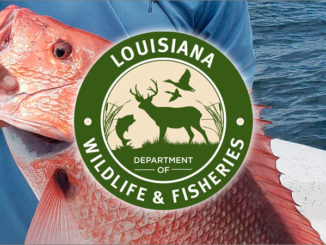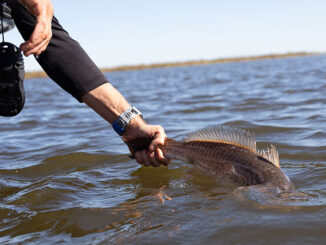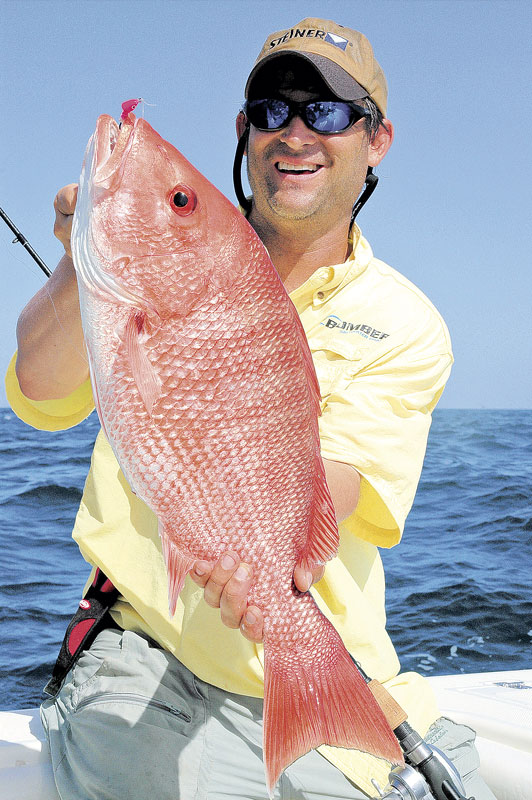
For many people, red snapper season marks their entire offshore fishing experience for the year. As fuel prices skyrocket, anglers need to make the most of each minute offshore.
“Normally, we head out to fish for yellowfin tuna first and stop at some snapper spots on the way back,” explained Andrew Bateman with Hunter Caballero’s Paradise Outfitters (504-384-8118, venicefishing.com) in Venice, La. “Where we catch snapper depends upon where we go for tuna. We get some huge snapper. Some approach 30 pounds.”
Historically, most anglers head to petroleum platforms to catch snapper. However, in recent years, oil companies deactivated and removed many rigs along the Gulf Coast so anglers increasingly fish natural bottom features or artificial reefs. Companies cut the tops off some rigs deep enough so the structures don’t pose navigational hazards and left the rest in the water as artificial reefs. Some structures have been in place for decades.
“We still have many offshore rigs in my part of Louisiana, but we’re seeing fewer of them,” said Joey Maciasz with Down the Bayou Charters (225-226-2781, downthebayoucharters.com) in Fourchon, La. “People can see the rigs for miles so they get lots of pressure. We use electronics to find hard structure on the bottom. When we’re fishing natural bottom for snapper, we might catch about every species of grouper in the area, several snapper species, amberjack, almaco jack, blackfin tuna and a few other things.”
Besides reds, anglers bouncing baits off reefs might also catch mahogany, mutton, lane (also called candy snappers), vermilion snappers (also called beeliners) and other species. The catch might also include amberjack, triggerfish, spadefish and other species.
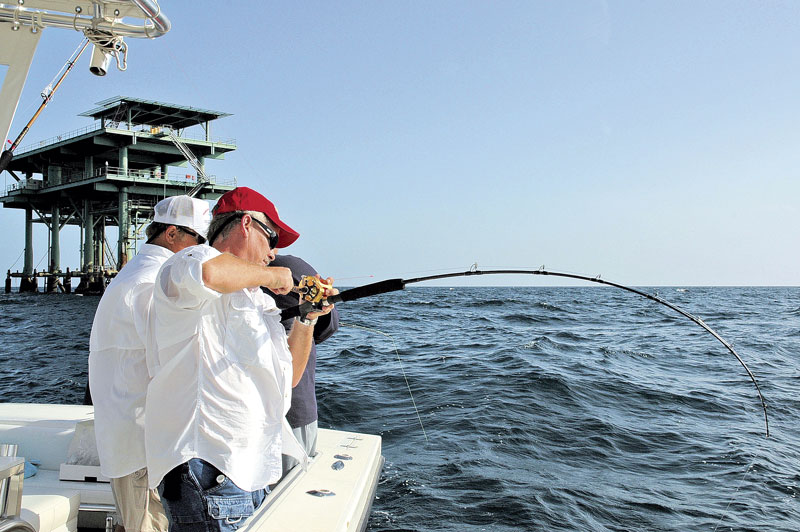
After the snapper
“After we catch our snapper limit, we often check out some other wrecks,” said Joseph Allen with Side Bet Sport Fishing Charters (228-366-0051, www.sportfishingchartersbiloxi.com) in Biloxi. “In deep water, we might try to catch some African pompano, grouper or scamps. If amberjack season overlaps with snapper season, we’ll try for amberjack and then come in to catch snapper, mangroves, cobia and other things.”
Many people consider mangroves the smartest and most challenging snappers. Notorious bait stealers, mangroves eat almost anything that swims, but relish live baits. They occasionally hit flies, swimbaits, spoons, even an occasional popper.
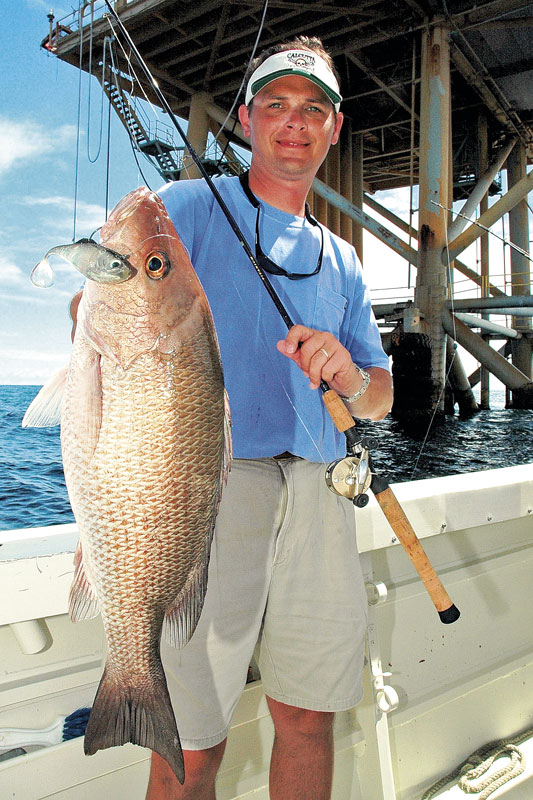
“If we have live bait, we’ll go catching mangrove snapper after we have our red snapper limit,” Allen said. “Live pogies or croakers are great for catching mangroves. When we don’t have live bait, we hide the hook in pogies and catch them like that. We use 20-pound test and a 3/0 circle hook for mangroves.”
Mangroves generally hang higher in structure, but surround themselves with cover. Approach a rig from upwind and toss fish pieces into the water so the current carries the tidbits into the cover. Once mangroves get into a chum frenzy, use fluorocarbon leaders and no weight to drop a bait on the nose of a specific fish. When hooked, mangroves instantly run to the nearest barnacle-encrusted object to pop the line, so turn them away from the structure immediately if possible.
“Mangrove snapper fishing is really fun around the shallow rigs,” Bateman said. “We catch them on pogies, but the best bait is a live croaker. We tie up to the rig and toss in some cut bait. We’ll see them come up. Put the bait in front of the one you want to catch. There’s no season in Louisiana on mangroves.”

Chum never hurts
While dropping baits to the bottom over a reef or near a rig, toss some chum in the water and set a drift line tipped with live bait. Without adding extra weight, simply toss the enticement behind the boat. Stick the rod into a holder and engage the reel clicker to sound the alert when something pulls the line. Depending upon the location and depth, a struggling live bait might attract king mackerel, dolphin (also called mahi), cobia, sharks, perhaps even wahoo, sailfish or marlin.
Some people dangle live baits from balloons to attract king mackerel and other fish. The balloon serves as a strike indicator.
“If we tie up to a rig to catch snappers, we’ll set out a small hardtail on a drift line,” Allen said. “We’ll suspend the bait about six feet under a balloon for king mackerel. When fishing for snapper, we always look for cobia. Frequently, cobia follow snapper up from the bottom. They get curious about all the activity and come up to check out what is happening.”
Cobia might pop up anywhere at any time. Also called lings or lemonfish, cobia love to eat hardhead catfish and just about anything else. Cobia also relish eels. Keep a live bait rigged to toss at any cobia that materializes.
“Mangroves and cobia both like oil rigs,” Maciasz said. “A little bit of chum gets everything fired up. We never know when a cobia will show up, so we have to be prepared. For cobia, I like using jigs. Sometimes, we’ll free-line a sardine to a cobia. Normally, when we hook one, two or three others come up.”
Cobia might eat just about anything, but sometimes, finicky fish won’t touch anything. Pitch a jig sweetened with a soft-plastic curly-tailed chartreuse or white trailer in front of a cobia. Tease it until the fish can’t stand it.
“Often, a cobia comes charging at a bait like it’s going to nail it, but it will stop and just nose it,” said Tommy Pellegrin of Custom Charters (985-851-3304, Customchartersllc.com) in Cocodrie, La. “Tease the cobia. Swim the bait away from it. When it comes to snip at it or sniff it, jerk the jig away from it. Keep teasing the fish until it gets so fired up that the angler won’t be able to jerk it fast enough to escape it.”
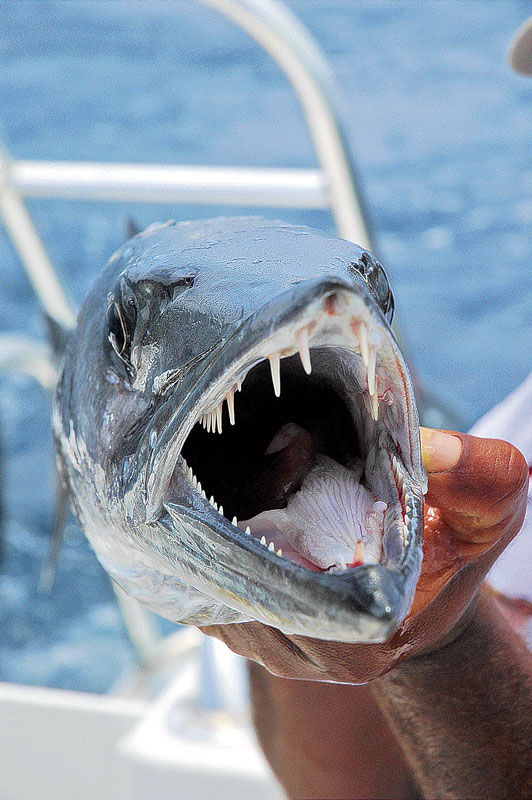
Intense action
The fertile gulf waters can provide intense action from a plethora of species from baitfish to billfish that anglers commonly catch besides snapper. Seasons and limits vary by species so always check the regulations before keeping anything.
“About 15 to 20 miles out of Northeast Pass, anglers can hit some rigs for snapper,” Bateman recommended. “Then, they can run another 15 to 20 miles farther south to fish for swordfish. For swords, we fish ledge drops in 1,100 to 1,600 feet of water. We drop a bait to about 200 feet off the bottom.”
When running from place to place, troll baits for king mackerel, large Spanish mackerel, dolphin, perhaps even huge snapper or amberjack. In blue water, the catch could include wahoo, tuna and billfish. Keep an eye on the electronics for bottom features that hold reef fish.
“I don’t build a whole trip around snapper,” Maciasz said. “We start around 80 miles out for tuna and grouper and work our way back fishing for snapper. For tuna, we’ll fish with live bait and chum. We’ll also troll. Often in the summer, the rip will be close to where we catch snapper. We’ll troll all different kinds of lures for mahi and other fish.”
While running watch for tripletail, cobia and mahi around grass lines. Cobia and tripletail also habitually drift along with floating debris or objects like buoys. After spotting a fish under a floating object, approach cautiously from upwind. Stop far enough away to avoid spooking the fish and make long casts.
“Tripletails are a ‘now you see them, now you don’t’ fish,” quipped Erik Rue of Calcasieu Charter Service (337-598-4700, calcasieucharters.com) in Lake Charles. “It’s almost like hunting. We have to see them before we can catch them. If we find a grass patch with lots of bait and activity, that’s where tripletail will be.”
Just for the fight!
Many critters low on the tablefare list top the charts for sporting qualities, such as barracuda, bluefish and sharks. Blue runners (also called hardtails or hardtail jacks), rainbow runners and other fish also provide outstanding sport. In some areas, the list might include tarpon.
Big-game anglers regularly use bonito for bait or chum. For pure reel-screaming excitement, take a bass-type rod with easily replaced lures and toss temptations to bonito chummed up to the surface. These extremely fast fish explode on topwater baits and might hit anything shiny. Sometimes, catching bait on light tackle becomes more fun than fighting larger species.
Probably nothing fights harder than a jack crevalle. Few people intentionally fish for jacks, but they can demolish tackle with lightning runs and sheer strength. Jacks terrorize baitfish schools and viciously smash topwater baits with shocking power.
“We catch many different species offshore,” Allen said. “We might catch jack crevalle or get on a big school of bull reds by the islands. Sometimes, we’ll go trout fishing in the Chandeleurs and fish for cobia the whole way home. The beauty of our fishery is we catch so many different species in so many different ways.”
Most people only rarely venture offshore, so maximize the experience by staying prepared and flexible. Try different things. One never knows what might pull on the other end of a line. Any time a bait hits the water could turn into a lifetime moment!
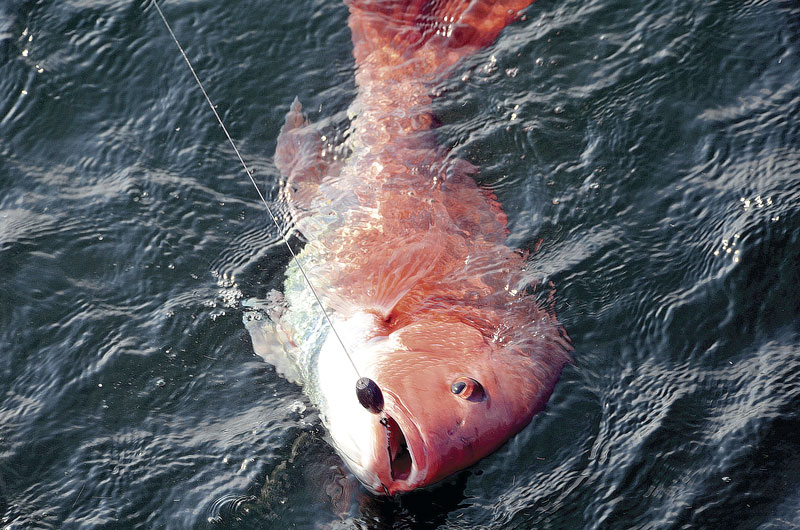
Red snapper season
Mississippi’s red snapper season will open for private recreational anglers and state for-hire vessels on May 27, 2022 with a daily bag limit of two fish per person and a 16-inch total length minimum size limit.
The season will be open seven days a week in both state and federal waters.
Private recreational anglers can fish out to 200 nautical miles. Vessels with state for-hire permits can fish in state territorial waters, which is nine nautical miles south of the barrier islands.
One angler per vessel, per trip is required to report through the MDMR Tails n’ Scales.
